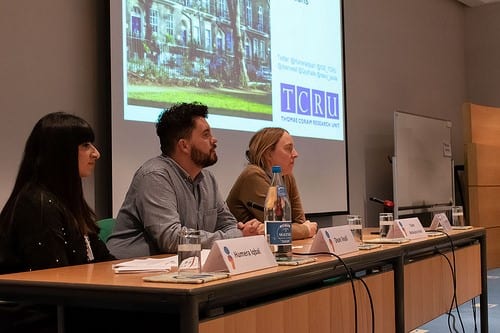
Between Spaces: Museums and Mental Wellbeing in Young People
In the latest feature showcasing Grand Challenges’ Adolescent Lives initiative, Siobhan Morris learns more about the impact of using museum objects and practices on adolescents’ mental health in psychiatric inpatient settings.
In Britain, the number of under-18’s presenting to hospital accident and emergency departments with psychological distress has more than doubled in the first half of this decade. Likewise, NHS figures published in September 2018 revealed that almost 400,000 children and young people aged 18 and under are in contact with the health service for mental health problems. Such increases, however, have occurred during a period of austerity and amid cuts to services. Psychotherapists have consequently warned of “a serious and worsening crisis” following a survey of staff in child and adolescent mental health services.
Dr Humera Iqbal and Dr Katie Quy (Lecturers in Psychology in the department of Social Science, UCL Institute of Education), in collaboration with Dean Veall (Learning and Access Officer, Grant Museum of Zoology) and Professor Paula Reavey (London South Bank University), therefore set out to explore what impact using ideas from museum spaces and creative practice could have on young people based at psychiatric inpatient settings. The project sought to ask: how can we foster a sense of belonging in young people with mental health needs in inpatient hospital settings a) to wider society and b) within the unit as a space of wellbeing? More specifically, the project asked: can museum-based practices facilitate discussions with adolescents experiencing mental health difficulties with issues relating to identity, memory, belonging and wellbeing?
To do so, the project conducted a detailed literature review and developed a database of museum and cultural practitioners working on mental health and with young people and details of inpatient hospitals working with arts and cultural organisations. Alongside this, the team worked with young people in inpatient settings – hospital units that provide intensive assessment and treatment for young people with mental illness or psychiatric disorders for which enhanced community treatment is no longer viable or safe. To address the question of how to foster a sense of belonging in these units, the team conducted interviews with museum and hospital staff and conducted three workshops (based on non-clinical interventions) – two in an inpatient unit and one at UCL Museums. Undertaking research in hospital settings with patients and engaging young people as co-researchers, allowed the team to find out about their experiences, both positive and negative, of cultural engagement and if it was something they identified with.

UCL Grant Museum of Zoology
To facilitate such discussions, the team used a range of museum-based activities with the young people including, object handling, art appreciation, and curation. For example, the team took a 700 million year old dinosaur bone from the Grant Museum into hospital, encouraging the adolescent patients to handle the object and interact with one another. They then facilitated conversations which emerged from the object handling. The project demonstrated that such workshops connected young people to the outside world and wider society by allowing them an opportunity to handle the rare and valued objects, and that this made the young people feel valued and important. In addition, the workshops created a space to make friends, to talk, and to forge connections during a time of boredom and often isolation for inpatients.
In this regard, the project found that such non-clinical interventions can be highly effective. The workshops demonstrated that providing a space for discussion around objects led to debates relating to the teenage patients’ sense of self and place in society, as well as discussions on race, class, and wellbeing. Patients and staff noted that experiences could be explored in a less risky manner due to discussions being externalised and based on the art and object rather than the individual circumstances. In this way, using museum practice in inpatient settings led the workshops to be seen as ‘safe’ and helped to diminish the stigmatising effects of inpatient admission. Participants could engage with the outside world and the young people were encouraged to think of museums as safe spaces. One challenge that emerged from this pilot study was around measurement and the need for development of tools for measuring the effectiveness of such non-clinical trials in adolescents.

Humera and Dean speaking at the Participation in Cultural Heritage for Mental Health Recovery, International Conference in Ghent (organised by FARO)
photo by Simon Bequoye
The project also found that there was a need to provide support for museum practitioners when conducting such workshops. In speaking with cultural practitioners, the project team learned about their needs in working with teenagers with mental health difficulties and identified ways in which academics could help with meeting these needs. The team were also able to reflect on ways of developing impactful (museum practitioners specialise in this) but also empirically and theoretically driven work (using theories on belonging from psychology and sociology).
As Dr Iqbal noted: “The funding provided a great opportunity for two very different disciplines to come together and merge practices in a small pilot study. What we have learned is that there is more work to be done in developing and measuring the effectiveness of non-clinical interventions and thinking about how space can influence wellbeing. Also, there is a real need for early intervention work before young people get to inpatient settings. We really hope to be able to work more with teenagers experiencing mental health challenges.”
Further information about the project is available on the Grand Challenges website.


Comments are closed, but trackbacks and pingbacks are open.